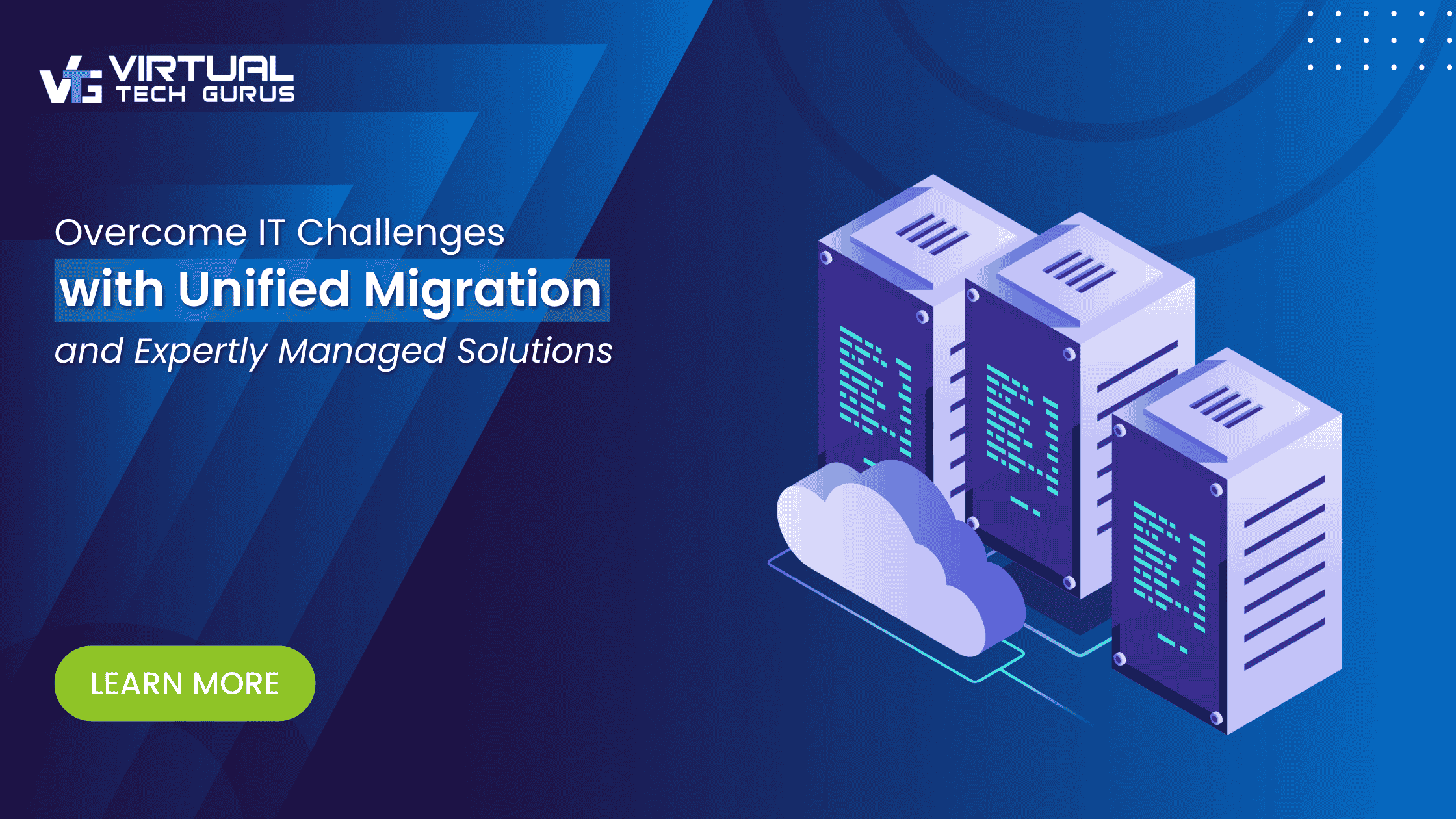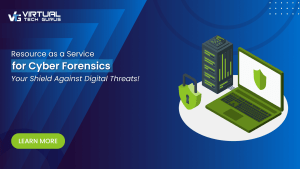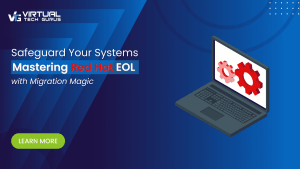Given the relentless nature of cyber threats, organizations need to adopt a cyber resilience mindset, recognizing that it is not a question of ‘if’ but ‘when’ such threats will occur. This approach is essential for safeguarding digital assets effectively. This blog post dives into the challenges organizations face and equips you with the knowledge to fortify your defenses.
Common Cyber Resilience Challenges
Keeping your data safe online is more important than ever. To achieve this, let’s first dive into the challenges that typically plague most businesses in establishing a strong cybersecurity posture. The first step is to understand and address the foundational challenges. Here are some key areas to focus on:
Observe & Know your Risks: The first step is to understand your current security stance and find where the gaps are. This includes figuring the potential risks, protection measures implemented and how well your current defenses are holding up.
Data Protection: With the evolving threat landscape, it is vital to know how well your data protection is lined up against industry standards for compliance.
Privileged User Management: Looking at privileged users, people who can do harm to your organization from a standpoint of server availability, data availability, access control.
Unpatched Vulnerabilities: Imagine tiny holes in your armor. These are vulnerabilities in your system that are to be checked and patched to keep threats out.
Securing your Entire Network: Your cybersecurity measure should encompass all your IT infrastructure including switches, network, servers and even the cloud environments you are using.
Data Driven Strategies for Enhanced Security
Organizations need a proactive approach and that’s where data-driven security strategies come in. By leveraging data analytics, businesses can gain valuable insights and build a more robust defense system. Having a great data-driven strategy is like strategically reinforcing specific sections based on their importance and potential vulnerabilities.
Let’s explore basic data-driven security techniques:
- Actionable intelligence: Predictive analytics is a powerful tool for identifying potential security threats before they occur. Imagine having to anticipate a cyberattack and take steps to mitigate it before it can do any damage.
- User empowerment: Role-based dashboards provide users with the most relevant security information for their application. Executives thus gain a higher level of perspective, while security analysts can dive deeper into specific threats.
- Simplified surveys: Automated data collection eliminates the manual burden of data collection, allowing for faster surveys and faster response times.
- Simplified compliance: Customizable compliance rules ensure your organization complies with specific industry laws tied to, such as FedRAMP or HIPAA.
By leveraging the above data-driven strategies, organizations can not only take a proactive approach at the security level but also be able to stay ahead of evolving threats and build stronger security systems.
See Your Entire Security Landscape: The Power of a Single Pane of Glass
In today’s complex threat landscape, a single pane of glass approach is a valuable tool for organizations of all sizes. It’s like having a central dashboard that displays your organization’s entire cybersecurity posture in a unified, clear view. This approach consolidates data into a central location, providing a complete view of your security health. This approach empowers informed decision-making across the organization. For example, a server administrator can focus on the security of their specific servers, while a security analyst can investigate potential threats across different user groups.
Efficiency through AI and machine learning
The benefits of AI and machine learning algorithms can dramatically increase security efficiency. These tools can learn from historical data to identify patterns and anomalies, helping to stay ahead of potential threats.
Seamless integration with your ITSM Stack
A truly effective security solution does not have to work in isolation. Seamless integration with your existing IT Service Management (ITSM) stack allows for a flexible approach to incident response. Security incidents can be monitored along with bug and issue reports on the same platform, providing a complete picture of potential issues and eliminating the need to eliminate time-consuming issues
Develop a robust standards-based cybersecurity framework
The National Institute of Standards and Technology (NIST) cybersecurity framework provides a solid foundation for building a strong cybersecurity posture. Organizations can use the NIST framework as a starting point and incorporate other industry standards such as ISO standards to create customized and robust cybersecurity systems that meet their specific needs.
Why Vulnerability Management is Crucial
Vulnerability management is an important investment for any organization.
- Prevents Exploitation: Unpatched vulnerabilities are like open doors for attackers. Regular vulnerability monitoring detects and closes these gaps, making it harder for attackers to exploit vulnerabilities in your systems.
- Reduces risk: By addressing vulnerabilities, you significantly reduce the overall risk of a security breach and create a secure environment for your organization’s data and systems.
- Protects sensitive information: Effective vulnerability management protects your sensitive, confidential information from unauthorized access or theft.
- Maintain customer trust: Strengthens customer trust by demonstrating a commitment to cybersecurity. Properly managing vulnerabilities shows customers that you take their data security seriously.
- Remain vigilant of changing threats: With the evolving cyber threat landscape, regular monitoring allows you to identify and address new threats as they emerge, keeping your defenses up to date.
- Cost savings: The costs of data breaches, downtime can be substantial and costs more than recovering from one.
- Compliance: Maintaining compliance with various regulatory authorities like HIPA, STC, etc.
The Importance of User Risk Management
Organizations that lack user risk management face a multitude of security challenges including
- Limited Visibility into User Activity: Organizations lack insight into what users are doing, creating vulnerabilities. Individuals with elevated access (server access, admin rights) pose a significant risk if their credentials are compromised.
- Outdated Access Privileges: Beyond malicious intent, users with outdated access that doesn’t reflect their current job functions can accidentally cause security breaches. For example, a company identified over 1000 users who still had access they no longer needed, creating unnecessary vulnerabilities.
- Hindered Incident Response: Without user risk management, incident response becomes more difficult. The sheer number of potential culprits with elevated access makes it harder to identify the source of a security breach.
- Weak Authentication Methods: Organizations struggle to implement complex enforcement mechanisms when they cannot distinguish between legitimate and unauthorized users.
- Increased Productivity Costs: Failure to invest promptly in risk management leads to reactions to security incidents, ultimately increasing operating costs Promptness helps identify and mitigate risks before they escalate, saving organizations money in the long run.
Building a Robust Data Protection: Beyond Backups
Data protection is an important part of cybersecurity, and it extends beyond just creating backups. These mechanisms work together to protect your data, ensuring that it is authentic (not altered) and available (that it is accessible when needed).
- Ensuring data integrity and privacy: Data protection strategies should prioritize two main objectives: maintaining data integrity and confidentiality.
- Prioritize data availability: Your data security policy should assure that only authorized users have access to the information they need when needed. Furthermore, the use of automatic failover mechanisms ensures uninterrupted access even during a crisis or disaster.
- Compliance: Strict data protection laws around the world, including GDPR, CCPA, HIPAA, etc.
- Precautions for long-term security: Regularly review all your data, access controls, personnel, and cyber resilience. This includes staying abreast of changing data protection laws to ensure your system stays up to date.
ZENfra: Strengthening Cybersecurity Posture Through Data-Driven Consulting
ZENfra, a cloud-based consulting tool by VTG, helps organizations improve their cybersecurity posture. It gathers data from various sources (cloud, servers, storage) to provide a comprehensive view of your IT environment.
Tailored Data Collection: ZENfra offers flexibility. It can automatically collect data or use custom scripts to capture information, ensuring all relevant data is gathered regardless of your IT setup.
AI-Powered Insights: The collected data is analyzed by an AI engine to identify anomalies, potential security issues, and trends. This allows ZENfra consultants to quickly understand your data landscape without needing access to sensitive information.
Enhanced Visibility: ZENfra provides various reports that visualize your IT environment by server, application, vulnerabilities, and more. This comprehensive view offers valuable insights for informed security decisions.
Faster Assessments, Lower Costs: ZENfra’s data-driven approach streamlines consulting. Automated data collection allows for assessments to be completed in two to three weeks, significantly faster than traditional methods, reducing project timelines and costs.
Building Trust and Better Decisions: ZENfra focuses on your data utilization to foster trust and transparency. Consultants use data to identify anomalies and collaborate with users to make informed decisions about business practices, recovery objectives, and overall cybersecurity posture. This empowers you to prioritize actions and improve your security.
Benefits:
- Reduced time and cost for security assessments
- Builds trust and credibility with clients
- Provides greater insights and data accuracy for better decision-making
- Empowers data-driven security action prioritization
- Reduces client concerns about vulnerabilities, recovery, and compliance
Conclusion
Cybersecurity is an ongoing challenge, but by adopting a data-driven approach, organizations can significantly improve their cyber resilience. ZENfra empowers you with the tools and insights to proactively defend your organization and become a trusted security advisor to your clients.
Contact Virtual Tech Gurus today for a free consultation. Let’s discuss your business goals and explore how we can become your trusted partner on the road to success.





